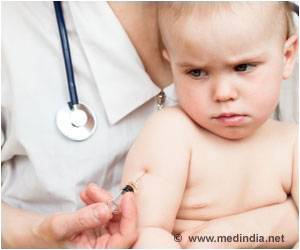If confirmed, the researchers say, diabetes testing should be recommended for individuals after recovering from mild forms of COVID-19. This possible link between COVID-19 and diabetes is being explored in a series of studies, including the CoviDiab Register and other related studies known as the ‘Long COVID-19.’
Previous studies have shown that inflammation caused by SARS-CoV‑2 can damage insulin-producing beta cells, causing them to die or alter their function, resulting in severe hyperglycemia (high blood glucose). Tissues reacting to insulin due to inflammation in the body is also considered a possible cause. The sedentary lifestyles brought about by lockdowns can also play a role. This may explain why newly-onset hyperglycemia and insulin resistance have been reported in COVID-19 patients with no previous history of diabetes.
However, it is not clear whether these metabolic changes are temporary or whether individuals with COVID-19 are at risk for developing chronic diabetes. Furthermore, there is a lack of studies examining the impact of diabetes after recovering from COVID-19 in mild cases.
To provide further evidence, the researchers examined electronic health records from the Disease Analyzer database, which contained data on 8.8 million adults who visited 1,171 general and internal clinics across Germany from March 2020 to January 2021. Of these, 35,865 patients were diagnosed with COVID-19.
The incidence of diabetes after COVID-19 was comparable to that of individuals (average age 43 years; 46% women) diagnosed with acute upper respiratory tract infection (AURI) (but not COVID-19) within the same time frame, matched with gender, age, health insurance coverage, COVID-19 index month or AURI diagnosis and comorbidities (obesity, hypertension, high cholesterol, heart attack, stroke). Regression models were used to calculate the incidence rate ratios (IRRs) for type 2 and other types of diabetes. Diabetes testing, too, confirmed that these individuals had slight type 2 diabetes.
Individuals with a history of COVID-19 or diabetes and those using corticosteroids within 30 days after the index date were excluded. During the follow-up of 119 days for COVID-19 and 161 days for AURI on average, the number of hospital admissions was the same in both groups (COVID-19: 3.2% vs. restrictions: 3.1%; average number of hospital stays: 1 in both).
Researchers have found that patients who test positive for COVID-19 are more likely to develop new cases of type 2 diabetes than those who give an AURI (15.8 vs. 12.3 per 1,000 people per year) with an event rate (IRR) of 1.28. In simple terms, the risk of developing type 2 diabetes in the COVID-19 group was 28% higher than in the AURI group. IRR for the COVID-19 group was not increased in other unspecified forms of diabetes.
“COVID-19 infection may lead to diabetes by upregulation of the immune system after remission, which may induce pancreatic beta cell dysfunction and insulin resistance, or patients may have been at risk for developing diabetes due to having obesity or prediabetes, and the stress COVID-19 put on their bodies speeded it up,” says lead author Prof. Wolfgang Rathmann. “The risk of abnormally high blood sugar in individuals with COVID-19 is most likely a continuum, depending on risk factors such as injury to beta cells, an exaggerated inflammatory response, and changes in pandemic-related weight gain and decreased physical activity,” adds co-author Prof. Oliver Kuss.
Prof. Rathmann adds, “Since the COVID-19 patients were only followed for about three months, further follow-up is needed to understand whether type 2 diabetes after mild COVID-19 is just temporary and can be reversed after they have fully recovered, or whether it leads to a chronic condition.” It is possible to instruct the patient to undergo a diabetes testing.
Although type 2 diabetes may not be a problem for most people with mild COVID-19, the authors suggest that anyone overcoming COVID-19 should be aware of warning signs and symptoms such as fatigue and frequent urination, and increased thirst, and seek immediate treatment.
The authors point out some limitations in their study of limited information about those admitted to the hospital and individuals (e.g., in hospitals or COVID-19 testing centers) outside of general practice (e.g., hospitals or COVID-19 testing centers). Similarly, they were unable to control body mass index because data were not available and the incidence of type 1 diabetes was not investigated due to the small number of cases. Finally, they point out that their findings may not be common to other people.
Source: Medindia



